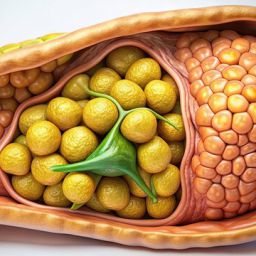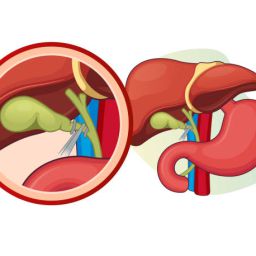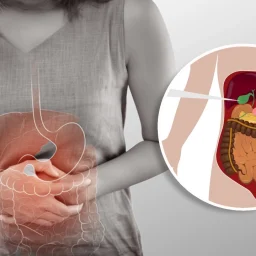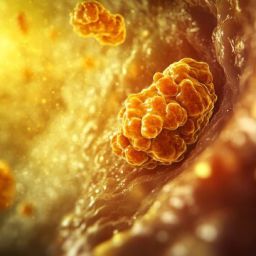
1. The Role of the Bile Duct in the Body
Before delving into how infections trigger bile duct stricture, it is important to understand the role of the bile ducts in the body. The bile ducts are part of a complex system that facilitates the flow of bile from the liver to the small intestine, where it aids in digestion, particularly the breakdown of fats. Bile, a yellow-green fluid produced by the liver, contains bile acids, cholesterol, and bilirubin, all of which are essential for the digestion and absorption of fats and fat-soluble vitamins (A, D, E, K).
The bile ducts are composed of small tubes that collect bile produced by the liver and transport it through the gallbladder before releasing it into the small intestine. When these ducts become narrowed or blocked, bile flow is impaired, which can lead to serious complications such as jaundice, liver damage, and digestive issues.
2. What Is Bile Duct Stricture?
Bile duct stricture refers to the abnormal narrowing of the bile ducts, which hinders the normal flow of bile from the liver to the small intestine. This condition can be caused by a variety of factors, including surgery, tumors, trauma, and infections. The narrowing or blockage of the bile ducts leads to the accumulation of bile in the liver, causing elevated levels of bilirubin and other bile components in the bloodstream.
As bile flow is obstructed, the liver’s ability to excrete waste products is compromised, leading to a buildup of harmful substances in the body. This can result in liver dysfunction, digestive issues, and other complications. Bile duct stricture can occur gradually over time, causing chronic symptoms that worsen if not properly treated.
3. How Do Infections Trigger Bile Duct Stricture?
Infections play a significant role in the development of bile duct stricture. Several types of infections can affect the bile ducts, leading to inflammation, scarring, and, ultimately, the narrowing of these ducts. These infections are often caused by bacteria, viruses, or parasitic organisms that enter the bile duct system either directly or indirectly. Here are the key ways infections can trigger bile duct stricture:
A. Acute Cholangitis

Acute cholangitis is a bacterial infection that occurs in the bile ducts, often as a result of an obstruction such as a gallstone or tumor. When the bile ducts become blocked, bile is unable to flow freely, creating an environment where bacteria can proliferate. Common bacteria that cause cholangitis include Escherichia coli (E. coli), Klebsiella, Enterococcus, and Enterobacter.
The infection leads to inflammation of the bile ducts, which can result in the formation of strictures over time. Chronic inflammation can scar the bile ducts, causing them to narrow and eventually obstruct bile flow. Symptoms of acute cholangitis include fever, abdominal pain, jaundice, and nausea. Without prompt treatment, this condition can lead to serious complications, including sepsis, liver failure, and the formation of bile duct strictures.
B. Primary Sclerosing Cholangitis (PSC)
Primary sclerosing cholangitis (PSC) is a chronic autoimmune disease that causes inflammation and fibrosis (scarring) of the bile ducts. While PSC is not primarily caused by an infection, it is often associated with recurrent infections that can further exacerbate the damage to the bile ducts. PSC is commonly seen in individuals with inflammatory bowel diseases (IBD) such as ulcerative colitis and Crohn’s disease.
The disease process begins with the inflammation of the bile ducts, which leads to fibrosis and strictures. Over time, these strictures can lead to complete obstruction of the bile ducts. Individuals with PSC may experience recurring infections, such as cholangitis, which can further damage the bile ducts and accelerate the progression of the disease.
C. Parasitic Infections
Certain parasitic infections can also contribute to the development of bile duct strictures. One of the most common parasitic infections associated with bile duct stricture is liver fluke infection, caused by flatworms like Opisthorchis or Clonorchis species. These parasites are typically transmitted through contaminated water or undercooked fish. Once ingested, the parasites migrate to the bile ducts, where they cause inflammation, infection, and scarring.
Liver flukes can lead to cholangitis and long-term bile duct damage, resulting in the formation of strictures. The resulting scarring can cause impaired bile flow and increase the risk of liver damage, jaundice, and other complications. In endemic areas where liver fluke infections are common, such as parts of Southeast Asia, liver fluke-associated bile duct stricture is a significant public health concern.
D. Bacterial Infections from Endoscopic Procedures
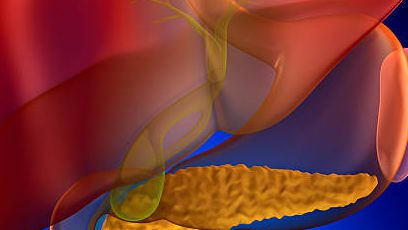
Endoscopic procedures, such as Endoscopic Retrograde Cholangiopancreatography (ERCP), are commonly used to diagnose and treat conditions affecting the bile ducts, such as stones, strictures, or tumors. However, these procedures carry a risk of introducing bacteria into the bile ducts, which can lead to infection and inflammation. If an infection occurs during an ERCP, it can result in post-ERCP cholangitis, a condition characterized by infection and inflammation of the bile ducts.
Infections from ERCP can lead to the formation of bile duct strictures due to prolonged inflammation and scarring. Additionally, repeated ERCP procedures can increase the risk of developing chronic strictures and other complications related to the bile ducts.
4. The Impact of Infections on the Body
Infections that lead to bile duct stricture can have a widespread impact on the body. The consequences of an infection-triggered stricture depend on the severity and duration of the infection, as well as the underlying health of the individual. The key impacts include:
A. Impaired Liver Function
One of the most significant effects of bile duct stricture is impaired liver function. The liver is responsible for producing bile, which is essential for digestion and the removal of waste products from the body. When the bile ducts become narrowed or blocked due to infection, bile cannot be efficiently excreted into the small intestine.
As bile accumulates in the liver, it can cause cholestasis, a condition in which bile flow is reduced or stopped. Cholestasis leads to a buildup of bilirubin in the blood, resulting in jaundice (yellowing of the skin and eyes). Over time, impaired bile flow can also result in liver cell damage, elevated liver enzymes, and potential liver failure if left untreated.
B. Digestive Issues
Bile is essential for the digestion of fats and fat-soluble vitamins. When bile flow is obstructed, digestion becomes impaired, leading to steatorrhea (fatty stools), malabsorption, and nutrient deficiencies. The body may struggle to absorb essential vitamins such as vitamins A, D, E, and K, which can lead to a range of health problems, including bone weakness, impaired immune function, and poor wound healing.
C. Increased Risk of Sepsis
Infections affecting the bile ducts can spread to other parts of the body, leading to systemic infection or sepsis. Sepsis is a life-threatening condition that occurs when the body’s response to infection causes widespread inflammation and organ dysfunction. In severe cases, bile duct infections can result in septic shock, a condition that requires immediate medical intervention.
D. Chronic Inflammation and Scarring
Repeated or unresolved infections in the bile ducts can lead to chronic inflammation, fibrosis, and scarring of the bile ducts. Over time, this scarring can cause permanent narrowing of the ducts and may lead to the development of cirrhosis in the liver. Chronic inflammation and scarring can also increase the risk of liver cancer and other serious complications.
5. Treatment and Prevention
The treatment of infection-induced bile duct stricture depends on the underlying cause of the infection and the extent of damage to the bile ducts. Common treatment strategies include:
- Antibiotics: To treat bacterial infections such as cholangitis or post-ERCP infections, antibiotics are prescribed to eradicate the infection and reduce inflammation.
- Endoscopic Procedures: ERCP may be used to remove blockages, drain infected bile, or place stents in the bile ducts to restore bile flow.
- Surgery: In cases where strictures are severe or persistent, surgery may be required to repair the bile ducts or remove obstructions.
- Parasitic Treatment: If the stricture is caused by a parasitic infection, medications such as praziquantel are used to eliminate the parasites.
- Liver Transplantation: In severe cases where liver damage is irreversible, liver transplantation may be necessary.
To prevent infections from triggering bile duct stricture, it is important to maintain good hygiene, avoid risky procedures when possible, and seek prompt medical care for any signs of bile duct infection or obstruction.
Infections play a critical role in the development of bile duct stricture, and the resulting narrowing of the bile ducts can have serious consequences for liver function and overall health. By understanding the risk factors associated with infections and the impact they have on the body, individuals can take steps to protect themselves from complications. Timely diagnosis, appropriate treatment, and preventive measures are essential for managing infections and minimizing the risk of bile duct stricture.

